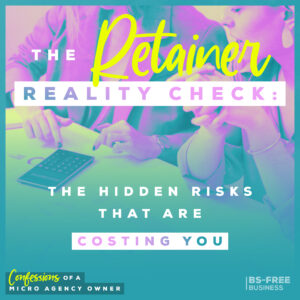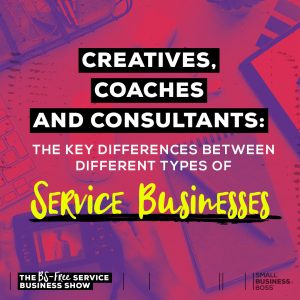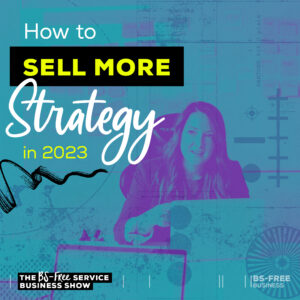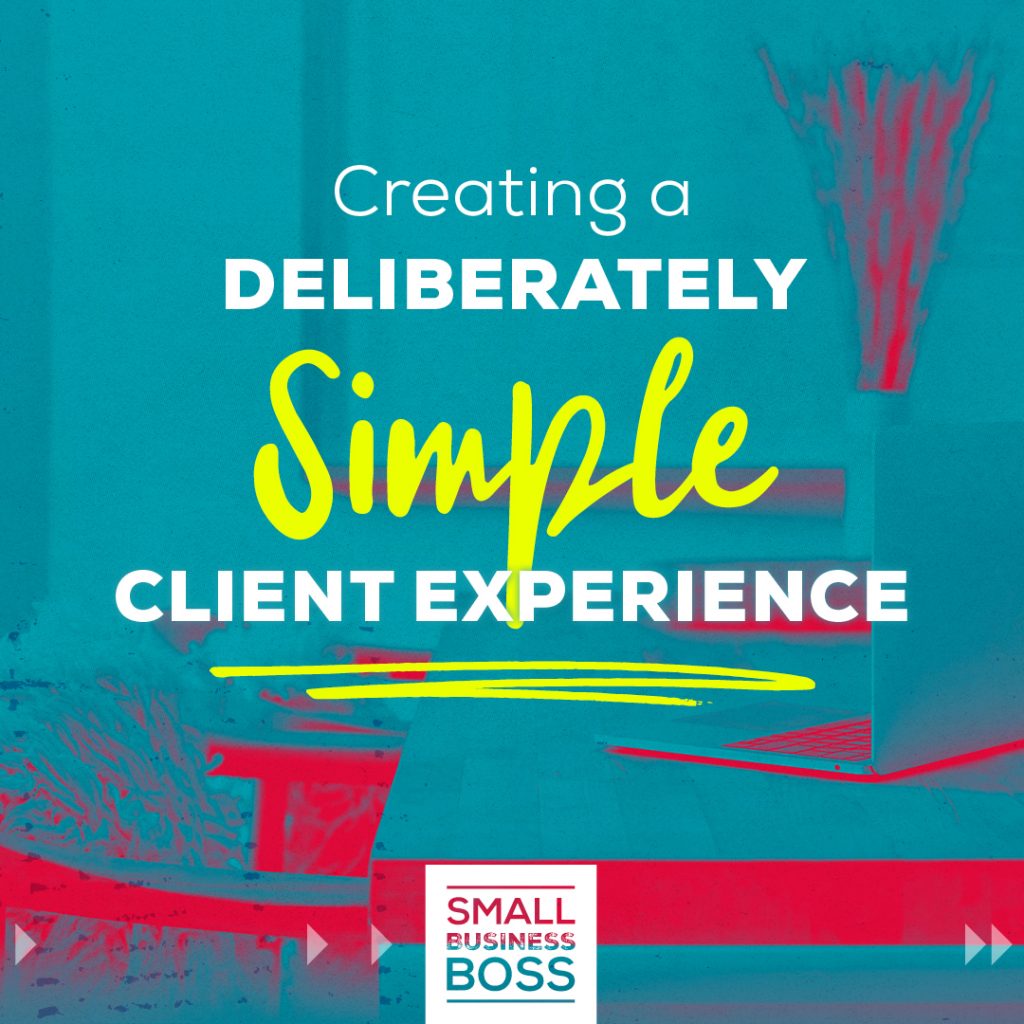
Search the site:
Episode 205: Creating a Deliberately Simple Client Experience
When you make your money by serving clients, the experience you create can make or break your business. But I’ve noticed that many times bosses make client experience much, much more complicated than it needs to be. In this episode we’re diving into how to create a deliberately simple client experience.
In my many years as a freelancer, and now a agency owner, I’ve always put client experience at the forefront of everything I do. Maybe it’s the customer service jobs I had as a teen and 20-something, or my years spent working in an agency where it was drilled into me that my job was to keep the customer happy, but CX is something that luckily comes naturally to me.
Two Common Client Experience Mistakes
Now, before we dive into some specific strategies and tactics around your client experience, and how you may be able to simplify it, I want to call a few specific things I see getting in the way of customer experience for many service business owners.
The first thing I see in the way is the urge to overdesign customer experience and the “systems” that support them. Not everything we do as a service business owner needs to be automated, facilitated by a fancy tool or follow this perfect script. In fact, if you’re doing that, you’re likely detracting from the client experience as it feels calculated and cold.
If you want to create a client experience that stands out, it needs to be human and high touch. That doesn’t mean it’s time consuming, or that you breach boundaries, but rather that you don’t need to invest hours and hours, or even days, creating this over the top automated process.
The other mistake that’s pretty common when it comes to client experience builds off this last one, where we as business owners, focus on the wrong things. We overestimate what it takes to serve our clients and keep them happy. And in that, we make things harder for ourselves, and for our clients, than it needs to be.
The goal of client experience should be for it to be simple for your client. There shouldn’t be any friction or real effort required as part of the steps along the way, otherwise you’re defeating the point. The last thing you want is for your client experience to be irritating or frustrating your client.
Forget Fancy, Keep it Simple with Your Client Experience
There are a few keys to creating a deliberately simple client experience, and the good news is that you don’t need anything fancy to make these a reality. As you listen to these keys, I’m going to challenge you to think about where you have opportunities to simplify what you’re already doing, or to improve on it.
Key #1: Onboarding
Let’s start with onboarding, as it’s not only the first step, but a critical one. The last thing you want is for your new client to have regrets after making the purchase!
The goal of your onboarding process should be to get things started with your new client with ease. Steps here may include the contract, invoice, project management set-up, collecting log-ins, scheduling your kickoff call and more.
There’s a lot going on at this point, so you absolutely need to ensure that you’re not bombarding your clients with a million details or sending seven different emails. Figure out everything that needs to happen, and then figure out how to streamline the steps for your client.
For example, the first email they get could be the contract and invoice, and then spelling out that once that’s done, they’ll get an invite to your project management system. Then in your project management system, they’ll book the first call and get their pre-work.
Keep it simple and don’t overwhelm them, even if you’re keen to get started.
Key #2: Clear Communication
Here’s a secret for you: client communication is the key to having delighted clients. And it’s dead easy to do. I know this as it’s something that Scoop clients often comment on, and it makes me laugh as it’s so incredibly basic.
Your goal with client communication should be for your clients to always know what’s going on. The second they have questions it leads to doubt and a case of the “what abouts”.
Be proactive so they know:
- What the next step in the process is.
- When they’ll next hear from you.
- The status of ongoing items.
Part of this is probably communicating more with your clients than you think is necessary, and you may feel like you’re annoying them. Believe me, you’re not. They’re going to appreciate that you’re proactive and make them feel like they’re in good hands.
Finally, don’t let clients go weeks without hearing from you. Nothing will make a client question things than being left wondering if you’ve forgotten about them.
Key #3: Seamless Client Management
Typically, we’re managing multiple clients so it’s easy for things to get out of hand. That’s why you NEED a way to manage your clients so deadlines and projects are corralled in a way that keeps everything on track.
Ideally, you’ll use a project management system, but keep in mind that your tool should fit the job you’re trying to do. If your paper-based or spreadsheet based system works, don’t make it harder than it needs to be. And if you’re using a project management system that you loathe and avoid, that’s not the right choice for you. Part of seamless client management is having parameters in place for when and how you communicate with clients. Do they email you? Do you have a weekly meeting? A monthly meeting? Those touchpoints and having them in place is a good way to ensure clients are managed.
Speaking of parameters, set guidelines in place for typical response times. And when I say response times, I don’t mean a week, that’s completely unacceptable. Ideally you should respond within 24 hours during the week, and 48 hours at the most. Nothing is more disconcerting than a person you’re paying money to do a job to who takes forever to respond.
Key #4: Do What You Say You’re Going to Do
If I think back over client experiences I’ve had that were less than ideal, there’s a common thread. That thread is that the follow-through was shoddy and they made promises they didn’t follow-through on.
And I can tell you that’s the same for your clients. There’s a reason the “flaky freelancer” stereotype exists, and it’s because many clients have been burned by service providers who don’t get the job done.
So, how do you avoid falling into this trap? First, don’t make promises you can’t keep. I’ve always made a point with clients of saying that their results may vary, as you simply can’t guarantee anything. Plus, that’s part of providing counsel to clients where you’re guiding them through what to expect, and identifying what may be unrealistic.
Also, remember, your word is your bond. If you say you’re going to do something, do it. And if something comes up, communicate what’s going on. Own it, and not avoid it, as when you don’t do what you say you’re going to do, it fractures trust with clients.
That’s just a starting point with your client experience, but looking at these areas, and watching for where you can simplify or improve will make things that much better for both you and your clients.
Remember, the goal here is a deliberately simple client experience. One that’s thoughtful and intentional, but keeps things simple and stress-free for everyone.

I’m Maggie Patterson (she/her), and services businesses are my business.
I have 20+ years of experience with client services, am a consultant for agency owners, creatives, and consultants, and vocal advocate for humane business practices rooted in empathy, respect, and trust.
Read or Listen to the Latest
For Solo Business Owners
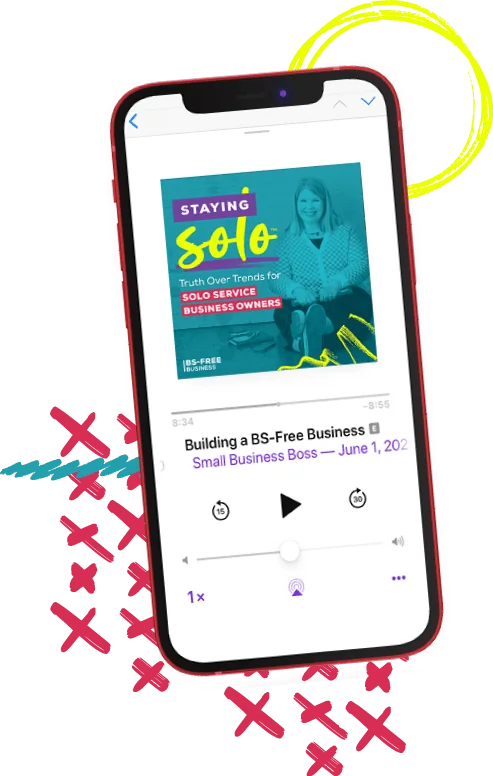
Growing a solo service business is tough.
It’s even harder when you’re bombarded with BS advice that steers you away from your values and why you started your business in the first place.
This is the podcast for solo creatives and consultants who want to remain as a team of one and have zero interest in the hustle and grind of typical business teachings.
Subscribe now and never miss an episode.
For Micro Agency Owners
Most podcasts for agency owners obsess over revenue growth as the ultimate success metric.
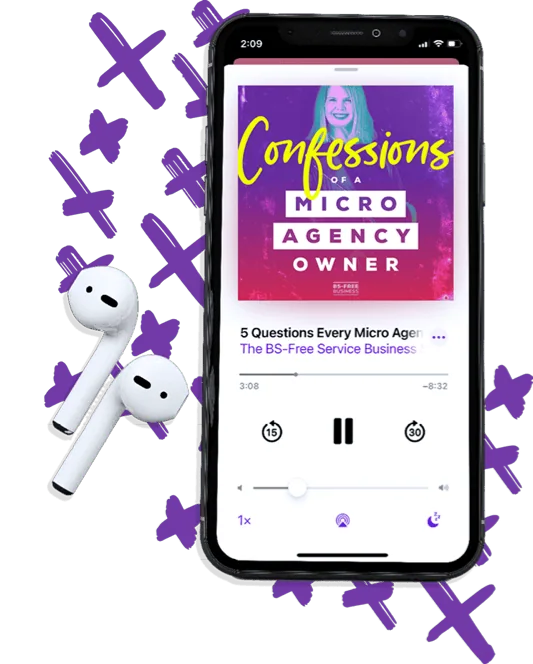
But here’s the truth: not everyone wants to make millions. Your goal might be to build a sustainable business that lets you have a life and doesn’t run you into the ground.
Join me as I spill my shameless confessions and share everything I’ve learned about building a micro agency that skips the BS of tired and typical agency teachings.
Follow Now on All Major Podcast Platforms
